There are instances, when Software exporting companies operating outside an export oriented scheme (STP, SEZ, EOU etc.) are advised, that there is no need for them to file SOFTEX forms. The young entrepreneurs in Startups, obviously get confused on this. In some cases, companies stopped getting SOFTEX certification done, after complying in past when they moved out of STP/SEZ schemes, owing to this advice.
There are always two parts to deal with regulatory compliance. One, the policy aspect and second, the procedural aspect. There is lot of material available on internet, on the procedural (process) part of filing SOFTEX form. And perhaps none, that explains the policy aspect.
This article is meant to clear the confusion on SOFTEX form among the Software product community by explaining the policy aspect of SOFTEX and background process, in the realm of foreign trade regulations.
Why and how SOFTEX form came in to existence?
In general exports means sending ‘goods and service’ to clients in foreign country (outside territorial borders of India) for purpose of sale. Physical goods are exported through a physical port of shipping (a sea port, airport or foreign post office) monitored by Central customs department.
When physical goods leave borders, from any port of shipment, the exporter is required to declared value of goods. In India, this was done through a form called GR form (PP form in case of exports by post office) for non-EDI ports and SDF for EDI ports, along with invoice and other supporting documents. Recently, as part of simplification of process, the GR and PP form have been substituted by a new form called ‘EDF’ (export declaration form) and SDF has been merged with shipping bill. Please see RBI circulars. RBI/2013-14/254 A.P. (DIR Series) Circular No.43 September 13, 2013) and RBI//2014-15/599, A.P. (DIR Series) Circular No.101, May 14, 2015.
This value declared is required to be accepted and certified by the customs office, at the port of shipment. This is called “valuation of export”. Once the valuation of export is complete, the value is accepted both by RBI and its authorised dealer (the exporter’s bank). RBI then monitors, the remittance of an equivalent value in exporter’s bank account.
A ‘Software’ exported on a media (CD/DVD, magnetic tapes etc.) has to pass through these steps, as it is exported physically through a port of shipment, as physical goods.
In early 1990s, when Software Technology Park (STP) scheme came in to existence, the need to export Software through data communication links emerged. Customs department had difficulty in managing this, as nothing physical was visible in a Software transmitted, as well as did not have human resources and knowhow to deal with exports through telecom links.
DeitY (then Department of Electronics) enabled an innovation in government policy and could get RBI to announce SOFTEX form as an alternative to the GR/PP forms, to suit the export of Software, through data communication links.
STPI being the administrative authority of STP scheme, became the designated authority for “Software export valuation” and certification of SOFTEX form, in place of Customs. As on date the jurisdictional STPI Directors and SEZ Commissioners are the designated authority for SOFTEX valuation.
The purpose, policy and process of SOFTEX form is same as in GR/PP (or new EDF) form.
The only policy point difference between GR/PP or EDF form and SOFTEX form is that GR/PP forms are submitted and valued, simultaneous to the exports actually happening from port of shipment. Whereas, SOFTEX form is a post-facto approval, after the actual export of Software has actually taken place.
An important policy aspect to understand here is that before the SOFTEX form was launched the Software was put at par with ‘goods’ in the foreign trade policy, as policy makers could not conceive a trade in anything that is not ‘goods’. Even today, a services export in non-IT sector does not need any declaration or export valuation. Therefore, Software (IT and ITeS) was given a special status in international trade equivalent to ‘goods’.
Valuation of exports by Customs/STPI/SEZ is a crucial part of process
As described above, there are two policy aspects embedded here,
- Regulation of foreign remittances by RBI against export done by exporter (the origin of this procedure and policy behind lies in the name of GR form – “Guaranteed Remittance”) and
- Valuation of export done by Customs officials at port of shipment (by STPI/SEZ for SOFTEX)
The second part of the process is “valuation of exports”. Exporter declares the value of exports supported by relevant documents. The designated officer in customs/STPI/SEZ considers and certifies this value and has all right to reject the value declared or examine any declaration for overtly undervaluation or overvaluation. The process is very smooth and in more than 99.9999% cases the value is accepted and certified. Rejections are only subject to a real doubt, unlawful trade happening and exporter not able to justify genuine exports. The valuation is done under the Customs Valuation (Determination of Value of Export Goods) Rules. Since there is no separate rules defined for ‘Software’ and the export oriented units (STP, SEZ, FTZ, EPZ) operate under customs bond, the same rule applies to ‘Software’. In absence of a rule for non-EOU exporters the law would rely on same rule as well.
An export of goods and software without valuation is incomplete. RBI depends on designated officers for this valuation exercise as they are the ones who have delegated powers under the constitution to do so.
A form not certified by jurisdictional designated officer is incomplete, legally.
Who should not file EDF or SOFTEX?
An exporter of physical goods has no option other than filing EDF, as goods passes through the port of shipment managed by customs. Similarly, exporter registered under STP and SEZ has no option as the value to be accounted as exports by exporter is taken from the SOFTEX forms signed in name of the exporter.
Exporters of Software (both IT and ITeS companies) not registered in STP or SEZ (or other EOU schemes) scheme should also file SOFTEX, as per foreign trade policy.
Such exporters popularly called non-STP units can file for SOFTEX with jurisdictional STPI Director.
Only those exporters whose exports are not goods or Software can escape the filing of SOFTEX. The foreign remittances received as exports proceeds, without certification of EDF (replacement of GR/PP form) or SOFTEX form will fall in two categories, either a general service or an unlawful remittance.
Exports of services that do not fall under IT and ITeS category are exempted from filing the export declarations and certification required thereof.
What is covered under the term ‘Software’ in RBI circular
The RBI circulars on SOFTEX mentions exports of ‘Software’. It implies both IT and ITeS exports. The genesis lies in how foreign trade policy evolved, ever since STP scheme was added to the bandwagon of export oriented schemes.
‘IT’ covers both Software services and Software products (including SaaS). Software services is a whole lot of things from consulting to design, development, implementation, maintenance, re-engineering of Software or a Software product.
‘ITeS’ covers all those services that are delivered to clients across borders of India using an IT driven system and process over a telecom/internet link (include BPO, KPOs, Digitization, Call centers, Data processing etc.).
What happens if exporter does not file SOFTEX (or alternative EDF) form?
If SOFTEX (or EDF in case of physical exports) form is not filed, and exports proceed is realized, the remittance received is either treated as ‘general services’ or not as an export proceed or illegal.
For general services such as management consulting, technical services there is no declaration form.
Advice for Software product including SaaS companies
For Software exporting companies not operating under STP or SEZ, it is possible to bypass and get remittances without filing SOFTEX or EDF, under the guise of a ‘service’ export. There is no immediate threat of non-compliance, unlike the exporters in STP or SEZ.
However, not getting classified as ‘software’ can create problems in future. First problem created is your exports are not ‘Software exports’. The other problems can erupt from regulations in other areas of taxation etc. Complex Service tax rules can create problem. Any situation, where an exporter will need to prove and protect herself can end up in to a nightmare.
The important part here is the export valuation process by STPI, SEZ or Customs. Once EDF/SOFTEX form is certified, your export is also certifies as export of ‘Software’, under foreign trade policy.
For Software product companies including SaaS companies, is it advisable to mandatorily file SOFTEX form or and EDF form for Software product export in physical media, even when they are not part of STP, SEZ or similar schemes.
iSPIRT efforts in further liberalization of SOFTEX \EDF
Many argue, why this documentation. The need to declare export value, monitor foreign remittances, export valuation and balance of trade & payment accounting will not vanish for a nation state. There has to be some minimal documentation and process to fulfil all these needs.
However, there is scope for further liberalization and need for an easy liberal regime for ‘ease of doing business’.
iSPIRT is aiming for a 100% “Digital” SOFTEX and EDF run under aegis of RBI, where the process can be executed and compliance completed even at single invoice level or a monthly consolidated statement level, based on various practical needs, with export declaration fully ‘dematerialised’.
This is much needed for a ‘digital economy’ and can be a boon for exporters especially in SaaS segment and startups, where orders and invoices are generated online. And online interface can be extended in to a fully ‘digital’ export declaration regime of RBI.
India to progress to a Product Nation, in a digital world, has to take some of these steps. Sooner the better.


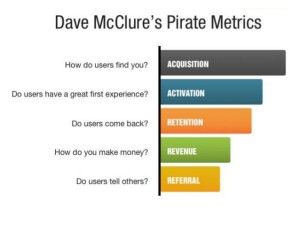
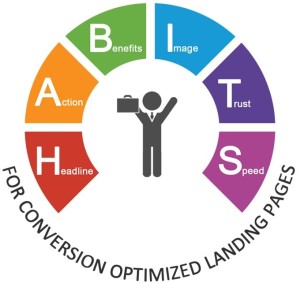
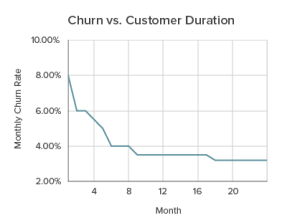




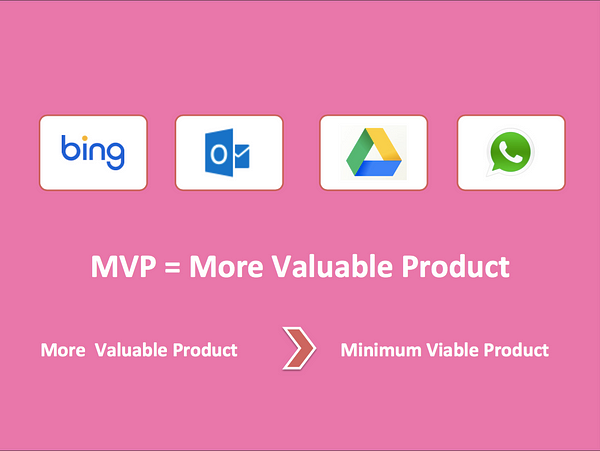
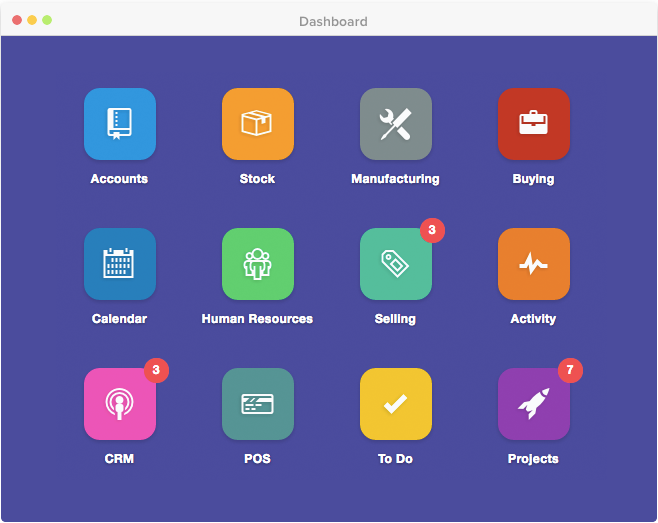
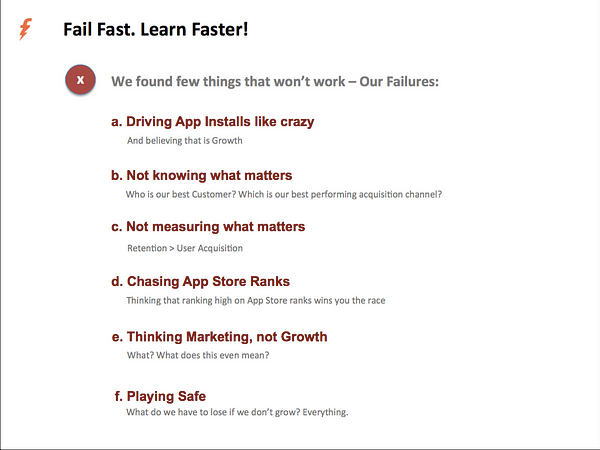
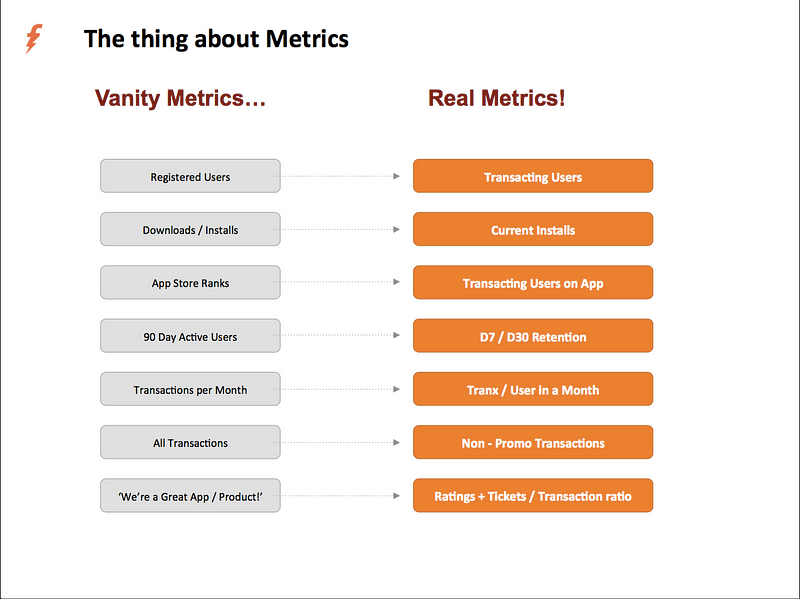
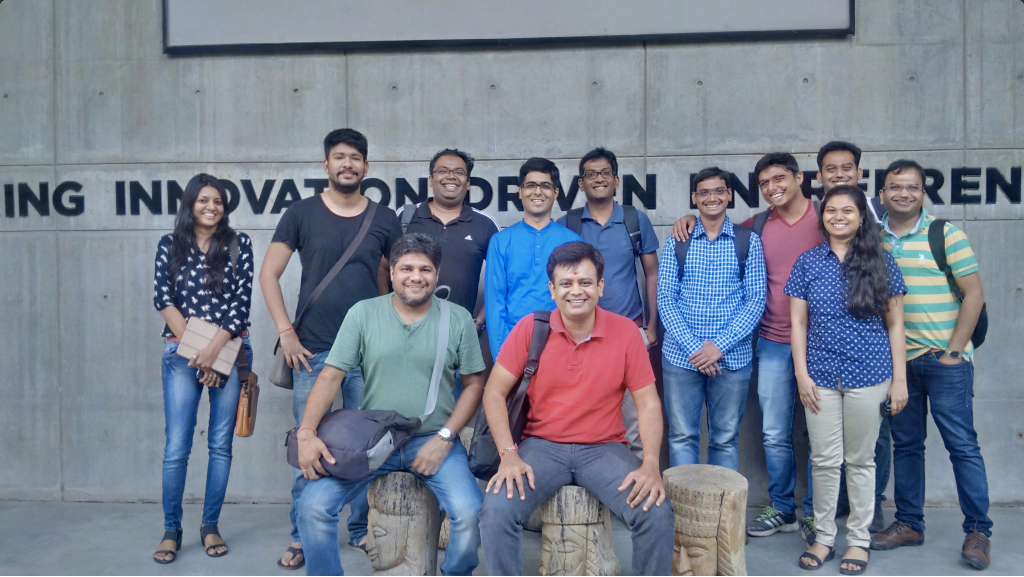
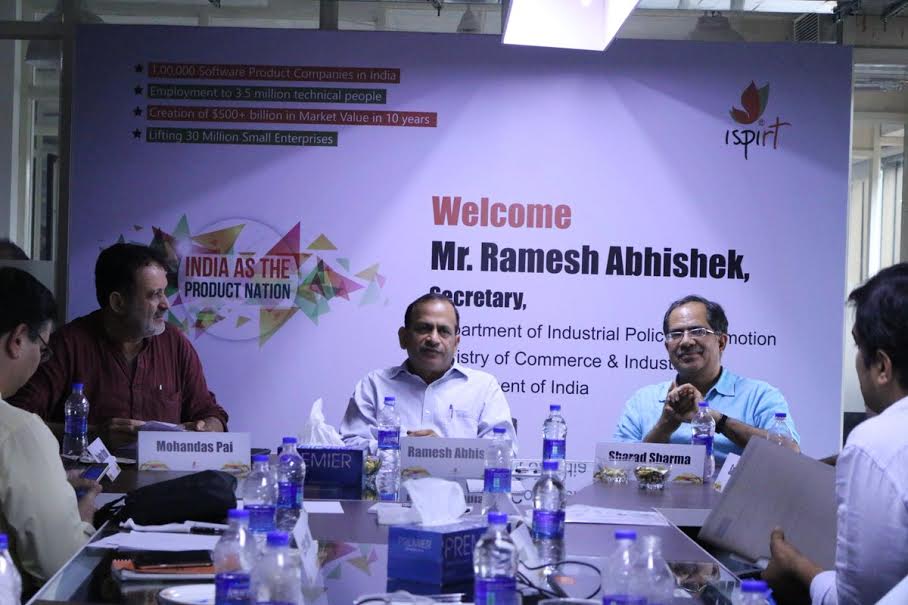 The follow-on session, by Shekhar Kirani, presented how INDIA is becoming a major player in the GLOBAL Software Product Industry and how Startups from INDIA are disrupting some major players. Subsequently Unbxd, ShieldSquare and Hotellogix discussed their own journeys and added depth to this discussion..
The follow-on session, by Shekhar Kirani, presented how INDIA is becoming a major player in the GLOBAL Software Product Industry and how Startups from INDIA are disrupting some major players. Subsequently Unbxd, ShieldSquare and Hotellogix discussed their own journeys and added depth to this discussion..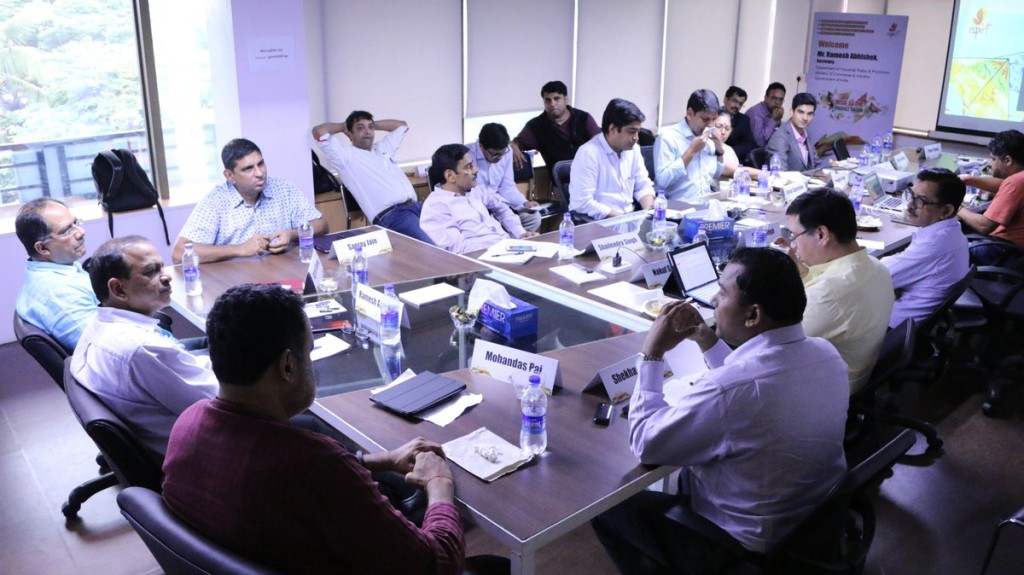 Insights and Advise from Mr. Ramesh Abhishek
Insights and Advise from Mr. Ramesh Abhishek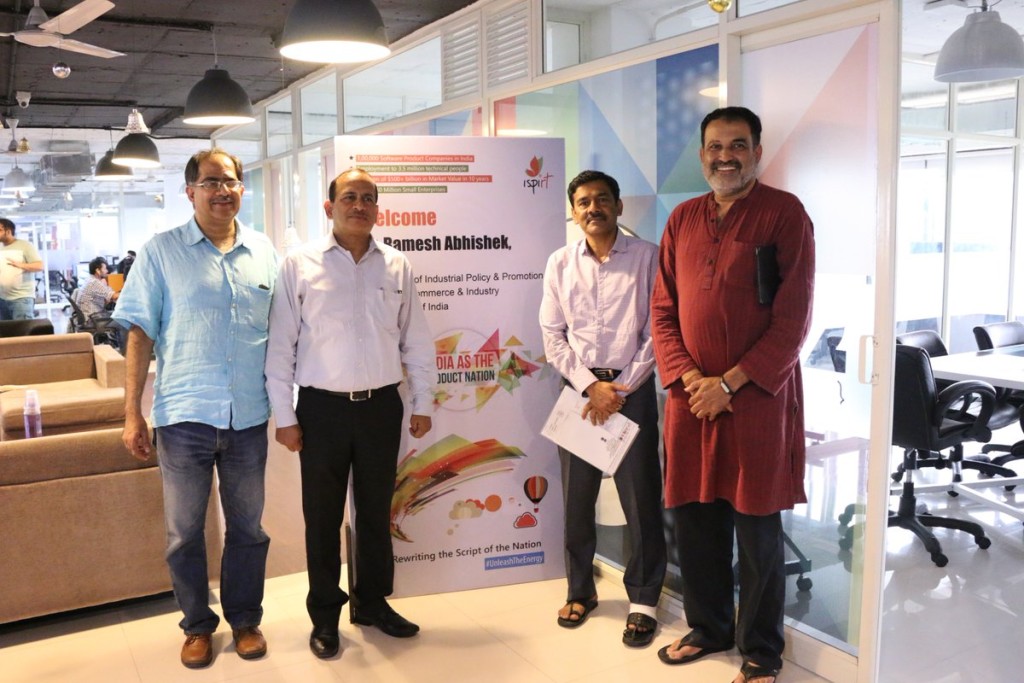 Conclusion
Conclusion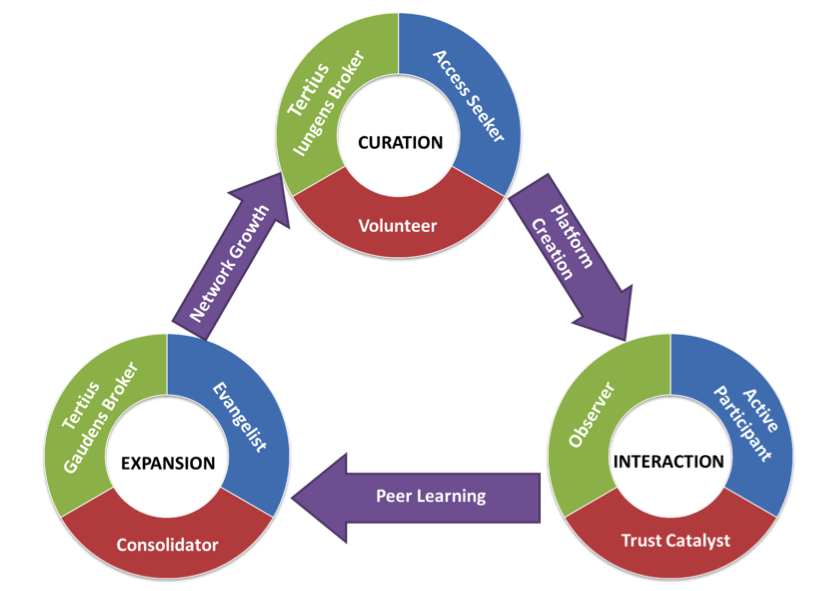 The insights from this study provide clear guidance on how to systematically create experiential knowledge networks in emerging ecosystems. It also highlights the important role played by entrepreneurial connectors such as iSPIRT in nurturing these networks.
The insights from this study provide clear guidance on how to systematically create experiential knowledge networks in emerging ecosystems. It also highlights the important role played by entrepreneurial connectors such as iSPIRT in nurturing these networks.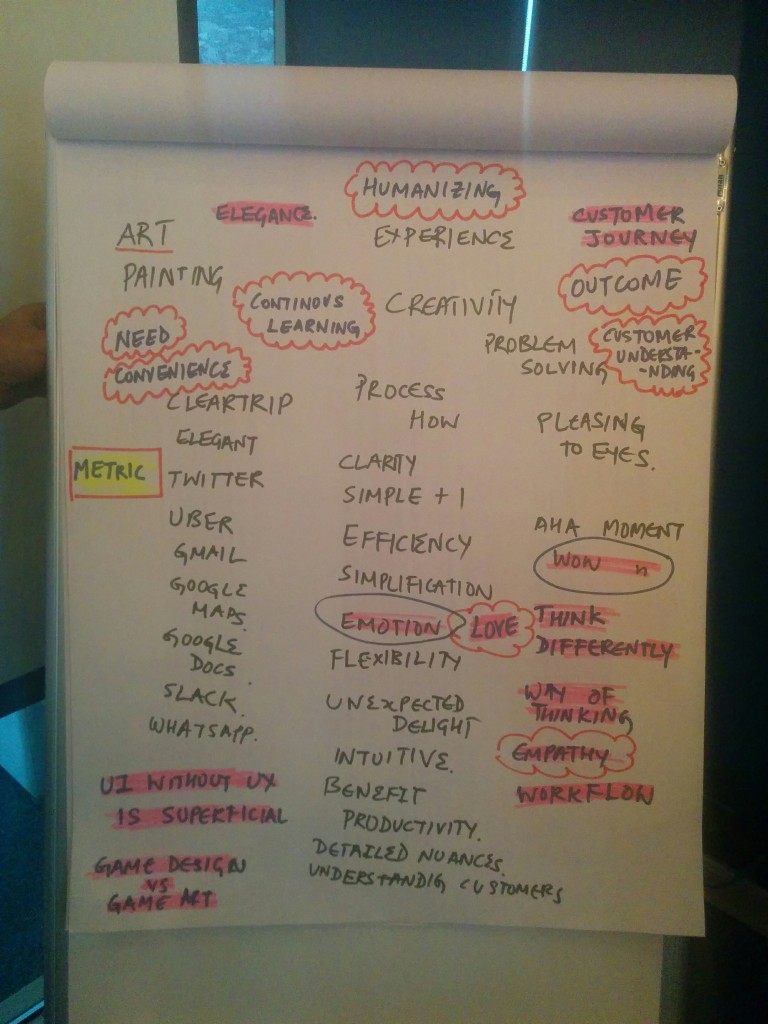 Throughout the session we had one white board on which we wrote what design means to us. We wrote apps we love and products which we consider as good examples and inspiration of good design. The participants initially thought design had a lot to do with ‘Art’, ‘Painting’ or ‘Creativity’. As we went further, our understanding evolved and ‘Emotion’, ‘Customer Journey’, ‘Elegance’ were the new keywords on the whiteboard.
Throughout the session we had one white board on which we wrote what design means to us. We wrote apps we love and products which we consider as good examples and inspiration of good design. The participants initially thought design had a lot to do with ‘Art’, ‘Painting’ or ‘Creativity’. As we went further, our understanding evolved and ‘Emotion’, ‘Customer Journey’, ‘Elegance’ were the new keywords on the whiteboard. There is this simple pyramid which is quite self-explanatory for product making. Bottom to Top it reads,
There is this simple pyramid which is quite self-explanatory for product making. Bottom to Top it reads,